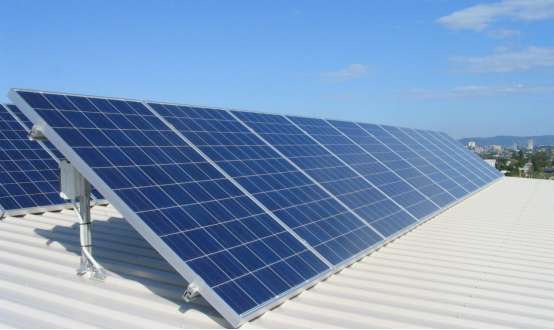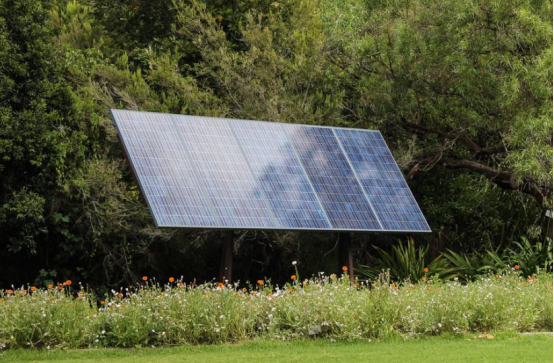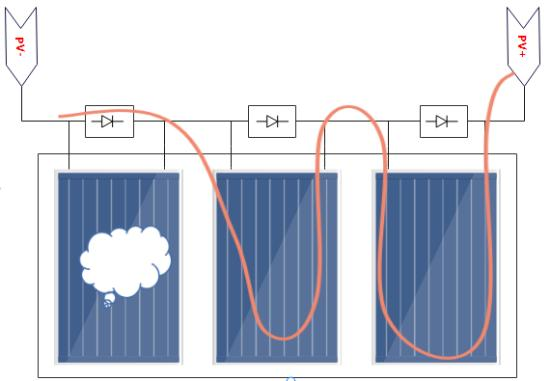Materials for making foldable solar panels
- Solar cells – the core of photoelectric conversion
- Front board packaging material – transparent protective layer
- Encapsulation film – strong adhesive
- Backboard material – sturdy backing
- Conductive Materials – Energy Transmission Channels
- Structural components – key materials for folding
Process flow of foldable solar panels
- Battery cell sorting
- Welding interconnection
- Stacked laying
- Laminated packaging
- Install hinges and structural components
- Aging and Testing
- Packaging assembly
In today’s pursuit of portability and clean energy, foldable solar panels have become powerful assistants for outdoor exploration, emergency power supply, and other scenarios due to their excellent lightweight and portability. So, what materials does it actually consist of? What kind of exquisite craftsmanship is required to form it? Let’s delve into the analysis together.
Folding solar panels are usually made of solar cells, front panel packaging materials, packaging adhesive films, back panel materials, conductive materials, and structural components.
Solar cells: the core of photoelectric conversion
The mainstream use of crystalline silicon solar cells (monocrystalline silicon or polycrystalline silicon) is due to their mature technology and relatively high efficiency. Some products with high lightweight requirements tend to use thin-film batteries because they have the advantages of being flexible and lightweight. They are usually cut into small sizes, such as 5×5 inches, 6×6 inches, to accommodate the size of the folding board and improve crack resistance.
Front board packaging material: transparent protective layer
The front panel material is the first layer that faces the environment directly, with high transparency and strong protection at its core. The mainstream choice is ETFE, which has excellent transparency (>95%), outstanding UV resistance and weather resistance, extremely light weight and flexibility, making it the preferred choice for high-end folding boards. High strength PET is a more economical alternative, with basic transparency and weather resistance, but it is usually inferior to ETFE in terms of long-term scratch resistance and lifespan.
Encapsulation film: Strong adhesive
The encapsulation adhesive film (mainly EVA) is located between the battery cell and the front and rear plates, and forms a strong adhesive layer after lamination and hot melting. Its core function is to firmly bond each layer, provide electrical insulation, and achieve moisture-proof sealing. Products pursuing higher reliability will choose POE adhesive film, which has better performance in anti-aging and waterproof steam penetration.
Backboard material: sturdy backing
As a key barrier for protecting the back of battery cells, the backplate material is usually made of high-performance composite materials such as TPT, PCB, PET based composite film, which have excellent insulation, weather resistance, waterproofing, and durability. Some products also add a thin layer of aluminum foil or fiber reinforcement layer to the backplate to further enhance rigidity, heat dissipation efficiency, and tear resistance.
Conductive material: energy transmission channel
Conductive materials form the current transmission network inside the battery panel. The busbar, as a key internal conductor, is made of flat tinned copper strip and precisely welded to the positive and negative grid lines of each battery cell. It is responsible for collecting the current generated by individual battery cells in series or parallel. The collected current is led outside the board through a weather resistant output cable and connected to a small waterproof junction box. This junction box is an important safety component that integrates bypass diodes inside. Its function is to provide a current path when some battery cells are obstructed, effectively preventing dangerous “hot spot effects” from occurring.
Structural components: key materials for folding
The structural components are the physical basis for the folding design to be realized and maintain durability. The hinge is the core hub of the folding action and must be made of high-strength and corrosion-resistant engineering plastics or metals to ensure reliable functionality even after thousands of repeated folds. Edge wrapping is responsible for sealing and protecting the edges of the panel, often using flexible and wear-resistant TPU or silicone materials for wrapping treatment. In order to maintain the flatness of the panel after folding and unfolding, some designs will embed lightweight glass fiber or carbon fiber rods as supports inside the edges. The back of the panel is usually covered with wear-resistant nylon or Oxford cloth as a backing, with handles or straps integrated on top, greatly facilitating the carrying and fixation of the device in various scenarios.

The core process of foldable solar panels usually includes cell sorting, welding and interconnection, layered laying, laminated packaging, installation of hinges and structural components, and aging testing.
Battery cell sorting
Strictly group battery cells based on electrical parameters such as efficiency, current, and voltage to ensure high performance matching within the same component and avoid the “short board effect” of overall power loss caused by individual differences.
Welding interconnection
Using a precision string welding machine, solder the tin plated copper busbar to the main grid line of the battery cells, and then connect the battery cells in series according to the circuit design to form a complete battery component, forming a current collection path.
Stacked laying
In a clean environment, lay each layer of materials in strict order: front panel material → EVA film → welded battery components → EVAE film → back panel material, ensuring precise alignment of each layer and no dust or pollution.
Laminated packaging
Send the stacked layers into a laminating machine, evacuate the interlayer air, and apply precise temperature (140-150 ℃) and pressure to melt and flow the EVA film, completely infiltrate the battery cells, and bond the front and rear protective layers. Finally, cool and solidify to form a sealed, insulated, and weather resistant sturdy whole.
Installation of structural components
Accurately install high-strength hinges at designated positions on laminated cured panels to ensure smooth folding and durability; Using TPU injection molding or silicone edge sealing technology to treat the edges, improving sealing and aesthetics; Finally, install and seal the waterproof junction box to complete the electrical outlet protection.
Aging and Testing
EL testing: Apply reverse voltage (usually 5-15V) to the components in a dark room, capture the luminescence image of the battery cell with a high-sensitivity CCD camera, and identify defects such as microcracks, broken grids, and virtual soldering through differences in brightness and darkness.
IV characteristic test: Scan the current voltage curve under standard test conditions (STC: 25 ℃, 1000W/m ², AM1.5), accurately measure peak power, open circuit voltage, and short-circuit current, with a deviation of less than 3%.
High voltage insulation test: Apply 3000V DC voltage/60 seconds between the junction box and the aluminum frame, and the leakage current must be less than 50 μ A to be qualified.
Packaging assembly
Unfold the multiple panels connected by hinges, use high-density wear-resistant nylon fabric as a backing on the back, and sew reinforcement ribs at the pivot. Integrate adjustable straps or handles to enhance portability. After connecting the output cables of each panel to the main junction box, conduct a simulation test to confirm that the system has no abnormalities under rated operating conditions. Finally, fold the panel into a compact shape along the preset crease to complete the finished product
packaging and storage.

To learn more about foldable solar panels, please visit https://gtpowsolar.com/


